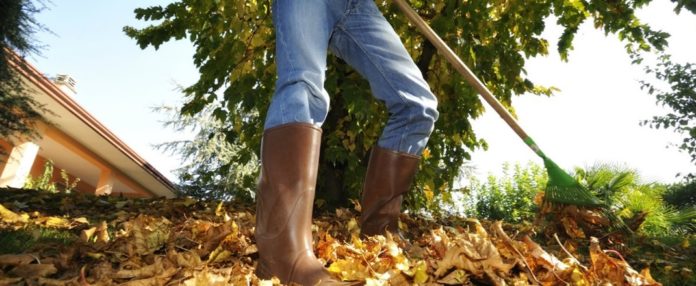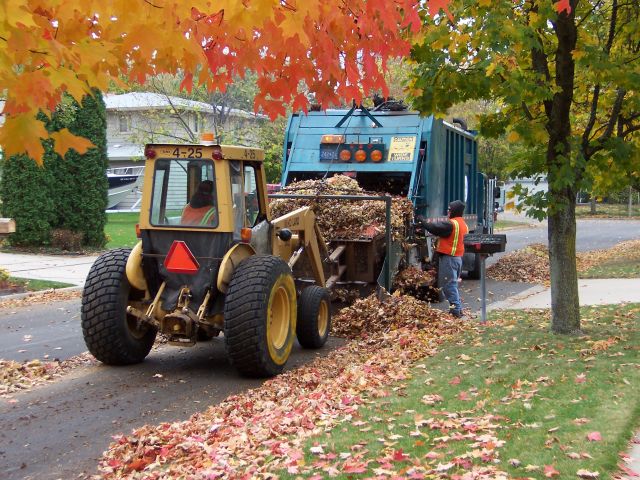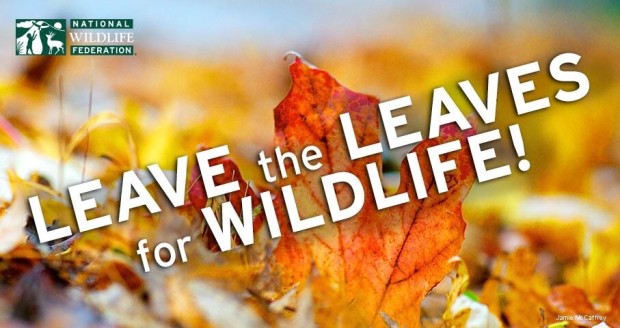
There are thousands of websites on the World Wide Web today that offer amateurs ‘tips’ for raking leaves like professionals. But according to the National Wildlife Foundation (NWF), you shouldn’t feel obligated to rake up every last leaf in your yard. Instead, you must leave leaves on the ground this fall and never look back; leaf raking destroys wildlife habitat, harms the environment, as well as deprives your yard of natural nutrients. Here are three reasons the naturalists at the NWF give for why you must skip the whole raking leaves process — forever.
1. Leaves Disposal Isn’t Good For The Earth
To make your yard look tidier, you spend hours each fall raking leaves, collecting them in plastic bags, and then sending them off in a truck to dump somewhere, most likely in a landfill. According to the United States Environmental Protection Agency, leaves and other yard debris — which account for more than 13% of the nation’s solid waste, a whopping 33 million tons a year — help make solid-waste landfills the largest producers of man-made methane in the United States. Leaf blowers and trucks used to haul away the leaves rely on fossil fuels and generate carbon dioxide, which pollutes the air and contributes to global warming along with methane.
2. Leaves Are Natural Fertilizers
Artificial fertilizers pollute; too much fertilizer also pollutes. When artificial fertilizer seeps into water supplies in large quantities, it leads to Eutrophication — a situation where there is not enough oxygen dissolved in the water for aquatic organisms to survive. Hardwood and dyed mulches typically cost $30 to $36 per yard, or $3 to $6 per bag. Therefore, polluting the environment comes at a cost, quite literally.
National Wildlife Federation Naturalist David Mizejewski says fallen leaves create natural mulch that stops weeds from growing while also fertilizing the soil, as they decompose. When the fall leaves decompose, the grass in your yard grows healthier in the spring. So, why spend money on mulch and fertilizer when you can make your own naturally?
3. Leaves Are Habitats For Wildlife
The leaf layer is its own mini ecosystem, says the NWF. Many wildlife species — including salamanders, chipmunks, turtles, toads, shrews, earthworms, and various insects — live in or rely on the leaf layer for food and other habitat. Many moths and butterfly caterpillars overwinter in fallen leaves before emerging in spring, adds the NWF. Raking up the leaves could destroy the seasonal housing accommodations that these species need for survival. Fewer moth and butterfly caterpillars mean less food for birds, because moth and butterfly caterpillars are an important food source for birds in the spring when they are lactating.
What To Do With Leaves?
The National Wildlife Foundation itself offers a few options:
- Let leaves stay where they fall. They won’t hurt your lawn if you chop them with a mulching mower.
- Rake leaves off the lawn to use as mulch in garden beds. For finer-textured mulch, shred them first.
- Let leaf piles decompose. The resulting leaf mold can be used as a soil amendment to improve structure and water retention.
- Combine fallen leaves (“brown material”) with grass clippings and other “green material” and keep moist and well mixed. You’ll have nutrient-rich compost to add to your garden next spring.
- Still too many leaves? Share them with neighbors, friends, schools and others. Some communities will pick up leaves and make compost to sell or give away.
- Build a brush shelter. Along with branches, sticks and stems, leaves can be used to make brush piles that shelter native wildlife.
Dr Thomas Nikolai, a specialist in Michigan State University’s plant and soil science department, tells The Christian Science Monitor:
“It’s [leaving the leaves on the lawn] not only not a problem, it’s awesome. Yes, big piles of leaves can inhibit grass growth and even kill the lawn, but mowing the leaf-covered grass breaks leaves into small pieces that enrich the soil and enhance the lawn’s “natural fertility”. It’s almost common sense: Where the leaves fall, just mulch them in.”
This article (3 Scientific Reasons Why You Must STOP Fall Leaf Raking) is a free and open source. You have permission to republish this article under a Creative Commons license with attribution to the author and AnonHQ.com.








I think above the comment section it should say Leaf a reply.
Thank you my family used to rake leaves to the back 1/4 acre. Now, I am in charge, and just mow the leaves with the grass, looks okay & fertilizes the yard, but my neighbors have a fit.
Now, I have some facts to shut them up.
I had alretsdy checked with the city, they don’t care.